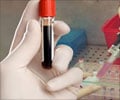In a finding that could lead to novel treatments for AIDS, an international team of researchers claim to have identified the 'hijacking mechanism' of HIV-1
In a finding that could lead to novel treatments for AIDS, an international team of researchers claim to have identified the 'hijacking mechanism' of human immunodeficiency virus type 1 (HIV-1).
The team at McGill University and the affiliated Lady Davis Institute for Medical Research at Montreal's Jewish General Hospital - along with colleagues at the University of Manitoba and the University of British Columbia have pinpointed the key cellular machinery co-opted by HIV-1 to hijack the human cell for its own benefit.Once a cell is infected with HIV-1, activation of the virus's gene generates a large HIV-1 RNA molecule known as the RNA genome.
This is then transported from the cell nucleus to the inner surface of the plasma membrane.
The RNA genome can produce both structural proteins and enzymes, but once it arrives at the plasma membrane it can also assemble into new copies of the virus that actually bud out of the cell.
Lead researcher Dr. Andrew J. Mouland said that there is a highway inside the human cell, through which RNA genome gets transported - or trafficked - from the nucleus to the plasma membrane.
"The RNA genome is critical, because if it doesn't get trafficked to the right place at the plasma membrane, the virus will not be infectious," he explained.
Advertisement
he study was published in the Journal of Biological Chemistry.
Advertisement
RAS









